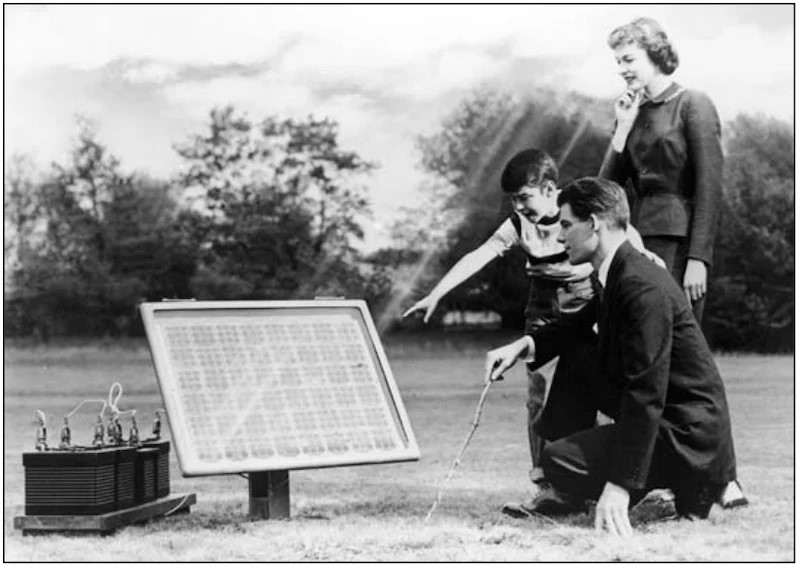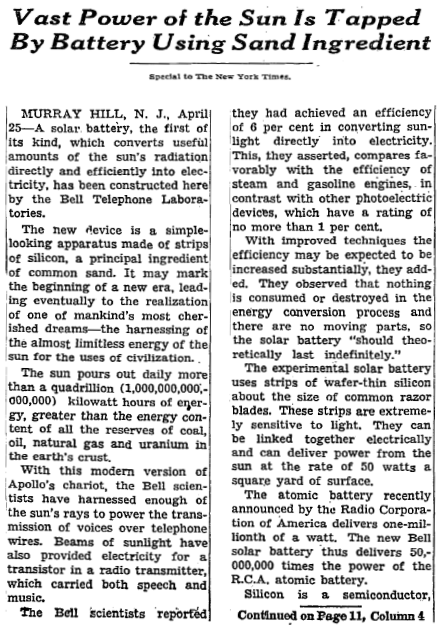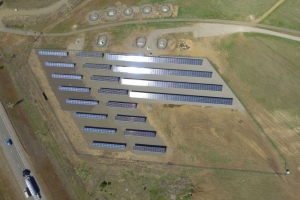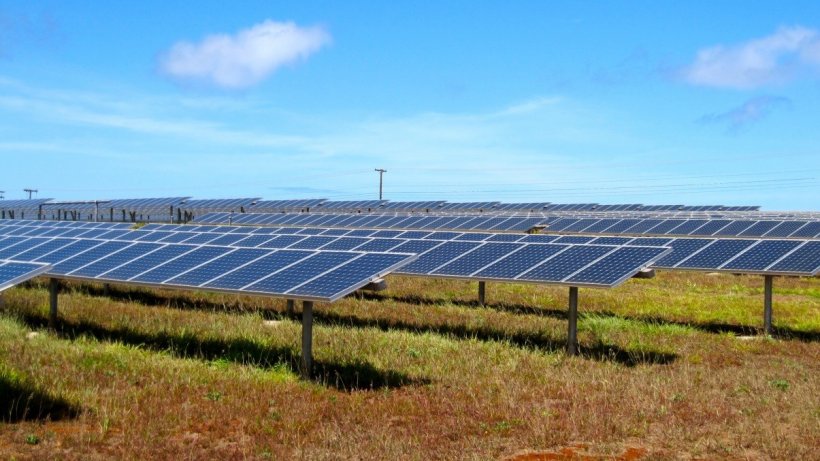The Solar Century: Landmark Moments in the History of Solar Energy
Monday, Apr 29 2024

The history of solar energy is an American success story.
Since the creation of the first silicon solar cell 70 years ago, solar leaders have been innovating, improving efficiency, lowering costs, and growing this American-born technology into an essential part of our nation’s energy system.
In 2023, solar accounted for over 50% of new electricity generating capacity added to the grid and employs over 260,000 Americans. With over 179 GW of installed capacity and growing, the solar and storage industry has become an American energy powerhouse.
The Solar Energy Industries Association (SEIA) has been at the forefront of the solar revolution for the last 50 years. As SEIA continues to fight for the expansion of reliable, low-cost solar power, here is a look back at significant solar milestones over the last 70 years.
1954: Bell Labs Introduces the First Silicon Solar Cells

In April 1954, Daryl Chapin, Calvin Fuller, and Gerald Pearson made the first silicon-based solar cell at Bell Laboratories in Murray Hill, New Jersey. While other types of solar cells have existed since the 1880s, these new silicon solar cells produced power five times more efficiently, setting the stage for the future of solar energy. On April 26, 1954, The New York Times covered the story on its front page. The article called the invention “the beginning of a new era, leading eventually to the realization of one of mankind’s most cherished dreams — the harnessing of the almost limitless energy of the sun for the uses of civilization.”
1960: Hoffman Electronics Creates 14% Efficient Solar Panel

Over the next six years, researchers improved solar cell efficiency as businesses and manufacturers began to develop more advanced solar technology. Hoffman Electronics, a manufacturer of radios, televisions, and solar cells, contributed several early breakthroughs in solar cell efficiency. In 1960, the corporation produced a 14% efficient solar cell — more than double the efficiency of the original silicon-based solar cells. Hoffman Electronics also mass-produced a range of solar-powered products, including a solar-powered radio.
1961: The United Nations Holds “New Sources of Energy” Conference
As research on solar energy continued, governments began considering its implications on an international scale. The United Nations held a conference on applications of solar, wind, and geothermal energy in Rome from August 21-31, 1961. About half of all papers that were presented at the conference discussed applications of solar energy, showcasing an international effort to develop solar power.
1970: The First Earth Day
Alongside early developments in clean, solar energy came an increasing concern for the environment. For many Americans, recent oil spills, polluting power plants, and wildlife extinctions highlighted the need for environmental protections. Sharing these concerns, Senator Gaylord Nelson and activist Denis Hayes promoted Earth Day as a day of environmental activism. 20 million people participated in demonstrations across the country on April 22, 1970, the first ever Earth Day, ushering in the modern environmental movement.
1973: “Solar One” Opens

Throughout the 1970s, innovators applied solar technology to ground-breaking projects, including solar homes. In 1973, researchers at the University of Delaware built the first house to integrate solar photovoltaic cells. The building, named "Solar One," used heat and electricity converted from sunlight.
1974: SEIA is Founded
In 1974, six solar energy experts and pioneers met to establish the Solar Energy Industries Association (SEIA) in Washington, DC. SEIA’s founders — Jim Edison, Peter Glazer, James Ince, Yahya Safdari, Sam Taylor, and Fred Morse — were among the first solar business leaders, solar energy researchers, and industry experts. They agreed the new trade association should be “broad-based” and support the “prompt, orderly, widespread, and open growth of solar energy resources now.” The U.S. solar industry faced several early obstacles as it was being established. However, SEIA soon began to play a central role in building a profitable solar industry, including working to integrate solar energy into the policies of the Carter Administration. Over the next 50 years, SEIA continued to support and advocate for solar energy, and now represents over 1,200 member companies in all sectors of the industry.
1978: Congress Passes the Public Utility Regulatory Policies Act
Four years after SEIA’s founding, Congress passed the Public Utility Regulatory Policies Act (PURPA), one of the first federal policies to promote renewable energy sources. The act, which followed the 1970s energy crisis, was meant to encourage energy diversity, reduce energy costs, and introduce competition in the electric sector. The legislation birthed the concept of independent power producers and set the stage for modern energy markets.
1979: Jimmy Carter Installs Solar Panels on White House

In a historic gesture, President Jimmy Carter installed 32 solar panels on the White House roof. During his presidency, Carter fought for clean energy use amidst an energy crisis and an increasing concern for climate change. At the dedication ceremony, Carter told the crowd: “Solar energy will not pollute our air or water. We will not run short of it. No one can ever embargo the Sun or interrupt its delivery to us. But we must work together to turn our vision and our dream into a solar reality.”
1982: First Utility-Scale Solar Farm in U.S. Begins Operation
The Atlantic Richfield Company (ARCO) pioneered utility-scale solar power generation in 1982. ARCO opened a 1.1 megawatt (MW) operation in Hesperia, California, the first industrial solar power plant in the country. The company later opened a larger, 5.2 MW solar power plant in Carrizo Plain, California. The plant in Carrizo Plain operated from 1983 to 1994 and had one of the largest photovoltaic arrays in the world.
1983: First State Net-Energy Metering (NEM) Program
As solar became more practical, states began to implement the first net metering programs to compensate residential and commercial solar customers for the excess energy they export back to the grid. Minnesota became the first state to enact a net metering law in 1983, allowing solar consumers generating less than 40 kilowatts to receive export compensation. The policy was among the first to incentivize and support the installation of distributed solar energy systems.
2004: First Solar Power International Conference
SEIA and the solar industry continued to expand throughout the 1980s and 1990s. In 2004, SEIA and the Solar Electric Power Association united to organize the first Solar Power Conference, later renamed Solar Power International and then RE+. The San Francisco event attracted over 1,000 attendees, including industry leaders, utility representatives, and policymakers. Today, the event attracts over 40,000 attendees annually.
2005: The Energy Policy Act of 2005 Passes
The Energy Policy Act of 2005 was a landmark achievement for SEIA and the solar industry. Following SEIA's steadfast advocacy, the law included the solar Investment Tax Credit (ITC). The solar ITC has proven to be the most important federal policy to support solar growth in the United States, driving hundreds of thousands of new jobs and billions of dollars of investments. Since 2005, SEIA has successfully advocated for multiple extensions of the ITC, including its long-term extension in the Inflation Reduction Act of 2022. Since the passage of the Energy Policy Act, the solar industry has grown by over 200x.
2006: First Community Solar Program Launches

The same year that the ITC was enacted, the city of Ellensburg, Washington installed a new community solar facility — the first of its kind in the nation. The community solar project generated 110 kilowatts of energy, allowing local residents to access the cost-saving benefits of solar energy even if they can’t install it directly on their roof.
2008: U.S. Solar Capacity Reaches 1 GW
With improving technology, falling costs, and federal policy support, the United States officially eclipsed one gigawatt of solar electric generating capacity in 2008. California accounted for half of all installed solar capacity at the time.
2011: SunShot Initiative Launches
To help the growing U.S. solar industry become more competitive, the Department of Energy (DOE) launched their “SunShot” initiative in 2011. The initiative aimed to lower solar energy costs by 75% by the end of the decade, bringing large-scale solar costs on par with other forms of energy. With increased economic competitiveness, the DOE looked to expand domestic solar installations and re-establish U.S. leadership in the global solar market.
2013: President Obama Installs Solar Panels on White House
Throughout his presidency, Barack Obama promoted clean energy and pushed for action on climate change. In 2013, he released a Climate Action Plan calling for a historic expansion of clean energy and setting ambitious targets for solar power. To showcase his support for solar, Obama became the third U.S. president to install solar at the White House, following former presidents Jimmy Carter and George W. Bush.
2015: U.S. Solar Industry Surpasses 200,000 Workers
With federal policies supporting the growing solar industry, the U.S. surpassed 200,000 solar workers in 2015, marking a record-breaking year for the industry. The solar workforce continued to rise, providing well-paying, family-supporting jobs to communities across the country.
2015: First U.S. City Reaches 100% Renewable Power
Burlington, Vermont became the first city in the country to be entirely powered by renewable sources in September 2014. Today, Vermont gets 19% of its electricity from solar energy.
2015: First State Sets 100% Renewable Electricity Goal

Hawaii set a precedent in 2015 by becoming the first state to pass a goal to reach 100% renewable electricity. The plan increased the state’s initial goal of 70% clean energy by 2030 to 100% renewable electricity by 2045, with solar contributing a significant portion. Today, 23 states have a 100% clean energy goal.
2016: The U.S. Reaches 1 Million Solar Installations
Four decades after the first grid-connected solar installation, the U.S. solar industry hit a major milestone in 2016 when it surpassed 1 million solar installations. It was so significant that even President Obama was impressed.
Solar continued to grow at record speed, reaching 2 million installations just 3 years later.
2017: Utility-Scale Solar Costs Falls Below $1/Watt
In 2017, the U.S. solar industry hit a “SunShot” Initiative goal three years ahead of schedule when average utility-scale solar prices fell below $1/watt for the first time ever. Considering this early success, the DOE began looking towards their SunShot 2030 goals, which aims to reduce the cost of solar-generated electricity by 50% between 2020 and 2030.
2022: Congress Enacts the Inflation Reduction Act
In August of 2022, President Biden signed the Inflation Reduction Act (IRA) into law, supercharging clean energy investments and transforming the future of the U.S. solar industry. SEIA and Wood Mackenzie predict that the IRA will lead to more than half a trillion dollars of new solar investments by 2030. Truly transformational.
2023: Solar Accounts for Over 50% of New Electricity Capacity Added to the Grid
Solar accounted for over 50% of new electricity capacity added to the grid in 2023 with a record-shattering 32.4 GW of new installations. This marks the first time in 80 years that a renewable electricity source has accounted for over half of annual capacity additions. Expect this trend to continue in the years ahead.
2024: SEIA Celebrates 50 Years
SEIA has been at the forefront of each of these milestones over the last 50 years, championing countless policies and initiatives to establish the multi-billion-dollar solar and storage industry we know today.
Solar is the fastest-growing sector of the energy industry, and SEIA will continue to lead the way to deliver greater economic opportunities, lower energy bills, and a more resilient and reliable grid.